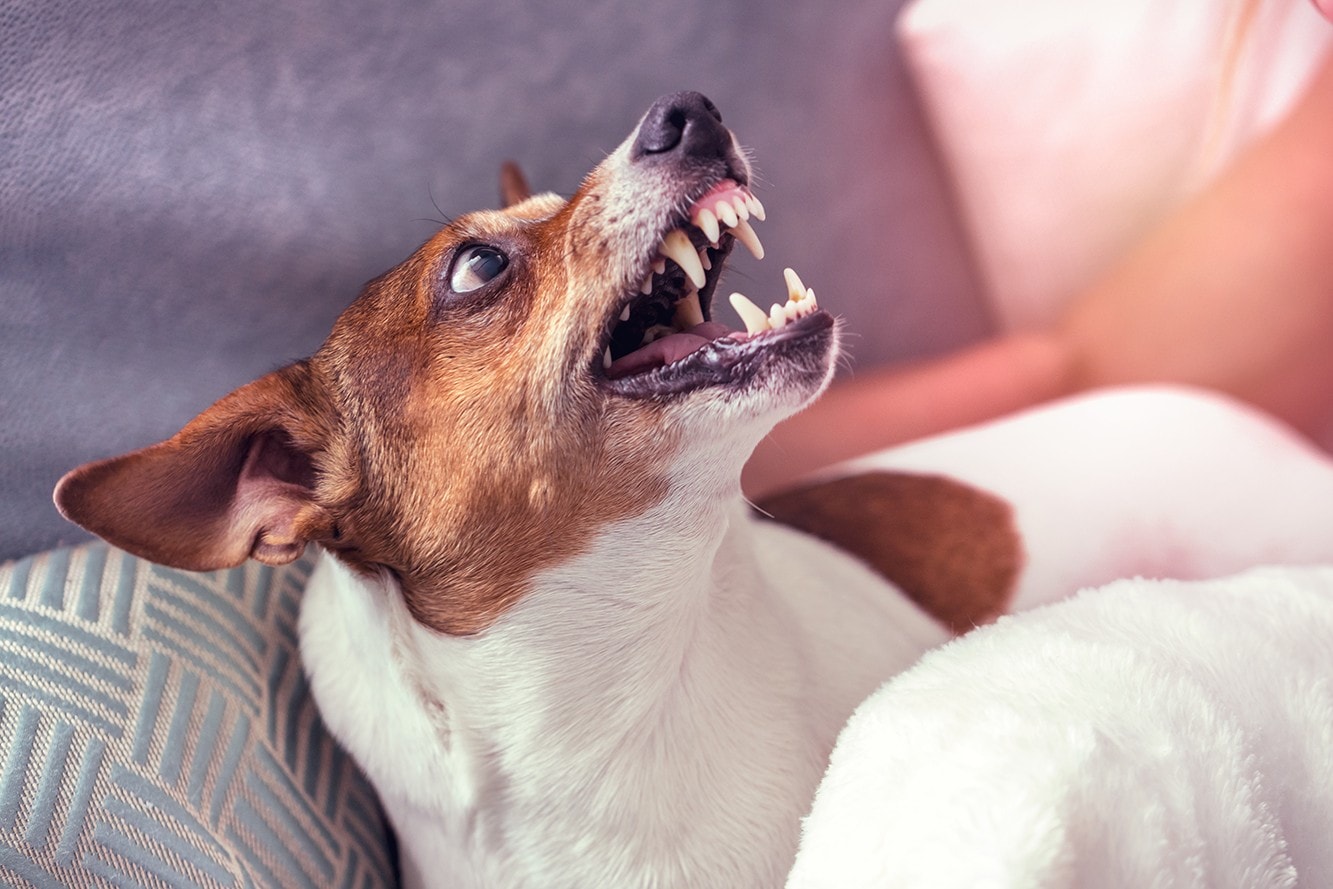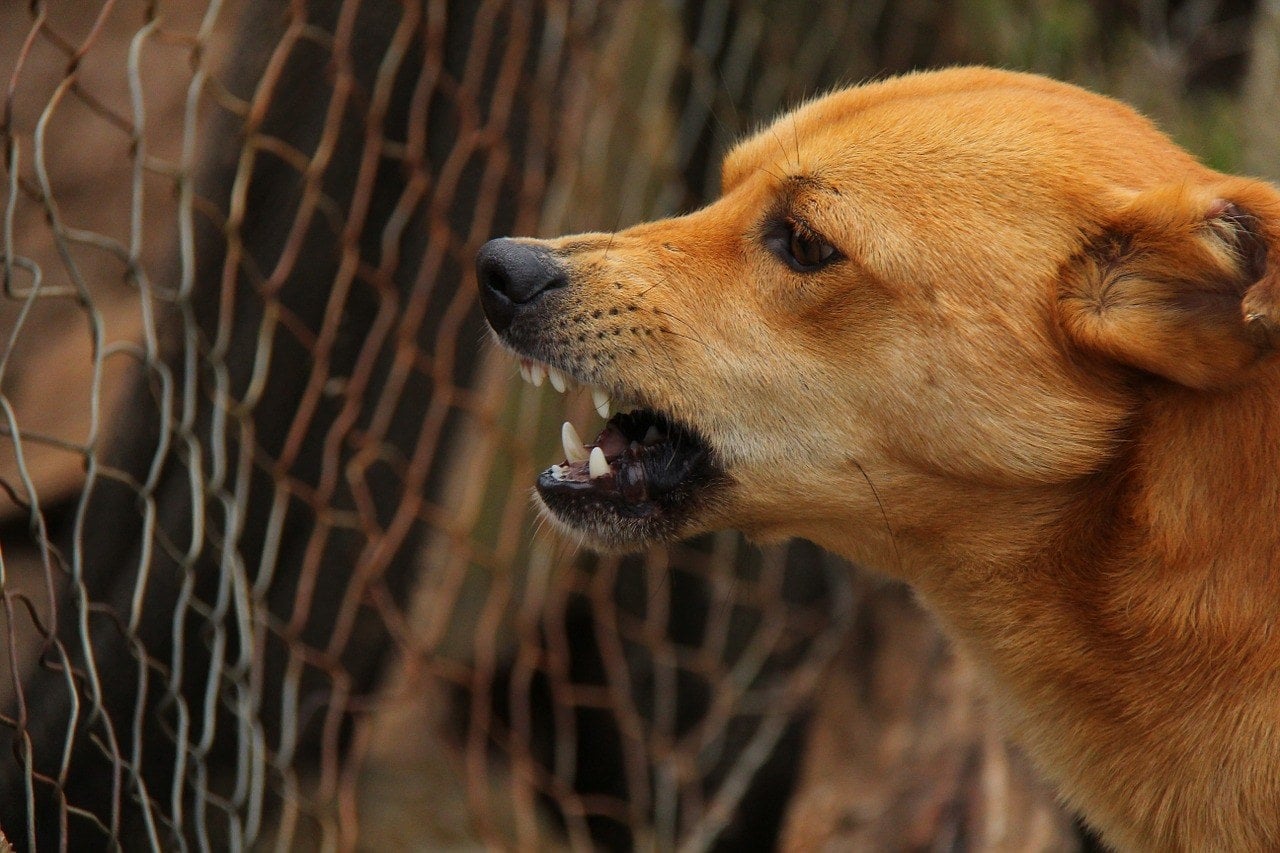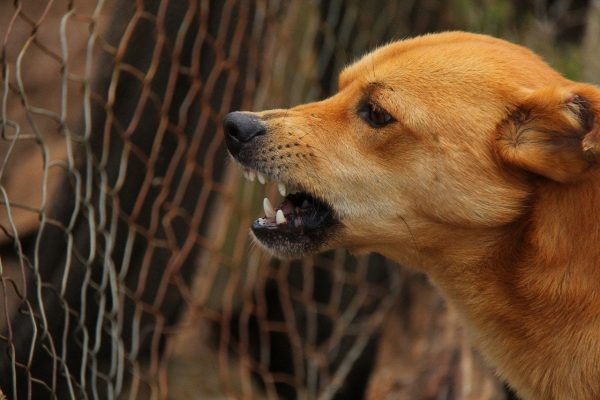If you’ve got an aggressive dog on your hands, whether they frequently act out in aggression or have seemingly random bouts of it, you are not alone. Aggressive behavior in dogs is one of the top reasons that pet owners see a behavioral specialist. While you can’t always cure it, there are steps that you can take to reduce the occurrences of this unwanted behavior. Read on to find out more about stopping dog aggression.
Reasons Your Dog Is Getting Aggressive
Dogs have many reasons that they can get aggressive. We will go over these in detail, but keep in mind that a dog almost always has a reason for acting out. Your job is to get to the bottom of it and either train them out of it or avoid the triggers that cause it.

Pet behaviors can be caused by all kinds of things, but sometimes the source is medical. You can manage veterinary costs with the help of a pet insurance company like Lemonade, which offers adjustable plans and balanced coverage.
Are Some Breeds More Aggressive?
The fact is, any dog breed can get aggressive. Just like people are born and raised to have certain dispositions, dogs can inherit certain genes that predispose them toward aggression and can carry baggage from their pasts. This is especially true of rescue dogs when you don’t know for sure about their past.
Certain breeds do carry a trait of watchfulness and apprehension to strange people and animals. These kinds of breeds are typically useful for shepherding livestock. So, when they have the shepherding traits without the livestock, an improperly trained dog of this breed might have some “aggression” issues.
Other breeds have a stronger “prey drive” than other breeds, meaning they might go after squirrels or cats more easily. This can be interpreted as aggression that could be trained out of them as a puppy, but it’s also very instinctual.
Keep in mind, too, that some dogs are just bigger and stronger than other dogs and therefore, can seem more aggressive. There’s a certain intensity to the aggressiveness that, say, a Mastiff can bring, while a Toy Poodle’s aggression might not seem as strong.
Different Kinds of Dog Aggression
There are myriad reasons that a dog may become aggressive in any given situation. We will outline them one by one so you can pinpoint if your dog displays a certain type of aggressive behavior.
- Fear
Fear aggression looks like a dog retreating into a corner or a spot they consider safe. Often, they will have their tail tucked under their legs. When this dog is approached, they will likely lash out.
This dog senses that someone in their “pack” is about to be harmed (true or not), which can be another animal or a person. This behavior is especially apparent in mother dogs that are protective of their puppies.
- Territorial
All dogs can be territorial, but some feel the need to hold down the fort. So, when they see an invader, this dog will go after it.
- Possessive
A possessive aggressive dog guards their food, bones, chew toys, or something else that’s worthwhile to them. Resource guarding is another name for this.
- Defensive
Defensive aggression is when a dog gives other signs that they don’t want to be bothered first. After these don’t work, they resort to defense mode and usually bite. Defensive dogs pick fight over flight.
- Social
More of a social “disorder” is displayed when a dog that hasn’t been properly socialized with other dogs growing up shows aggression when introduced to other groups of dogs.
- Frustration
A dog that’s fenced in or leashed may get aggressively frustrated when they want to do something that they can’t do. An example of this is when they are expecting to go on a walk with you, but they get impatient and bark loudly or nip at you.
- Pain or Illness
Dogs that feel pain may act out in aggression to keep you or someone else from making the pain worse. Dogs feeling pain from an illness may also exhibit this behavior. A cognitive brain problem might also bring out random aggression in a dog.
- Redirected
This happens when a person breaks up dogs fighting or when a restrained dog cannot get to what they want to, so they lash out at you instead.
- Sexual
Dogs ready to mate will become aggressive with members of the same sex. So, males will fight males for a female and vice versa. You can cure this kind of aggression easily by neutering or spaying your dog.
- Predatory
Some dogs have a stronger “prey drive” than others. While some people may not mind a dog killing small animals in this pursuit, the situation can, unfortunately, turn deadly when it involves chasing a small child.

What Does Dog Aggression Look Like?

Dog aggression can look different from person to person. Some people are used to roughhousing with dogs, while another person might ca
ll that behavior aggressive. Real aggression is more intense and can cause damage, while play aggression is normal and healthy as long as the dog does not cause pain and obeys when told to stop.
- Rigid stillness
- Guttural, threatening bark
- Grabbing with the mouth to assert control over a person
- Growling
- Baring teeth
- Snapping
- “Muzzle punch,” when a dog jabs with their nose
- Biting or nipping that causes bruising or open wounds
- Chasing
- Seeing the whites of your dog’s eyes
Can an Aggressive Dog Be Cured?
When a puppy shows signs of aggression, action can be taken in training and socialization to effectively “cure” the aggressive behavior. Puppies are considered more “malleable” than older dogs in this area and can therefore be easily trained out of bad actions.
It may not be possible to cure an older aggressive dog, especially when the severity of aggression is high and the dog is unpredictable in their actions. When you can narrow down the cause of your dog’s aggression, you can try to avoid these triggers as much as possible to keep the aggression down. It should never be assumed by dog owners that a previously aggressive dog is “cured,” as this is unlikely and the dog could cause serious harm if left unattended. You will have to keep your guard up and watch out for future aggression for the rest of your dog’s life to protect those around you.
How to Stop Dog Aggression
Anyone who has a dog displaying aggressive behavior can go through these steps to try to eliminate problems. Sometimes, older dogs respond well to behavior training, or they might need medical attention.
Pay Attention to Aggression Cues
Take another look at the different kinds of dog aggression. Pinpointing one kind is a step closer to understanding why your dog acted the way that they did. Simply take note of when and where it happened, who was around, and what else was going on at the time. The dog’s behavior is almost always a reaction to an underlying issue. Diagnosing the dog’s behavior is the first step in trying to stop it.
Determine the Cause or Recipient of the Aggression
The most important factor in recognizing aggression influences is the people or animals involved in the incident. Usually, aggression is caused by a stranger the dog doesn’t know or a certain group of people, like men, women, or children. Pay attention to whom your dog tends to be aggressive toward.
Partner With Professionals
After you learn the cues and the “who” behind the aggression (if any), it’s time to team up with the vet and/or behavioral specialists. These professionals will be able to help you with underlying causes, treatment, or training (or all three) to get your dog to act more normally.
Make a Plan
With your team, come up with a plan for how you will resolve the aggressive behavior. Everyone has to be on the same page, especially all the family members, with how everyone will deal with the aggression once it happens. A dog will be confused if family members try to treat the dog differently when implementing behavioral change.
Another plan you need to make is to prepare for unavoidable situations. For instance, if you live in an urban area, how will you go on walks with your dog when they get approached by men they typically show aggression toward?
Don’t Punish
Responding to aggression with aggression is never a good idea. A dog that gets hit, yelled at, or otherwise punished when aggressive will respond in two ways: They will probably either try to bite you, or they will grow resentful of you. Negatively punishing your dog may also result in redirected aggression toward someone or something else.
Avoid these adverse effects of negative punishment by going through a behavior plan with your vet or behavioral specialist.
Exercise
A lot of the time, dogs just need to get some energy out to maintain a healthy mind. When dogs are properly exercised, they may not have the energy needed to be aggressive toward other people or things. They are more relaxed and able to focus on the good things in life.
Your Dog Needs a Good Leader
When dogs were domesticated from wolves, they lost dependence on other dogs to form a pack and instead, formed a pack with humans and their families. Dogs now depend on us, their owners, for guidance and care for all things in life. When your dog is showing aggression, they need your help to guide them out of it. You are, in essence, their pack leader, and they need you to take charge.
We hope that we have helped you come up with ideas on how to do this. Your family, neighbors, and your dog (with their better behavior) will thank you later!
Featured Image Credit: Pixabay











